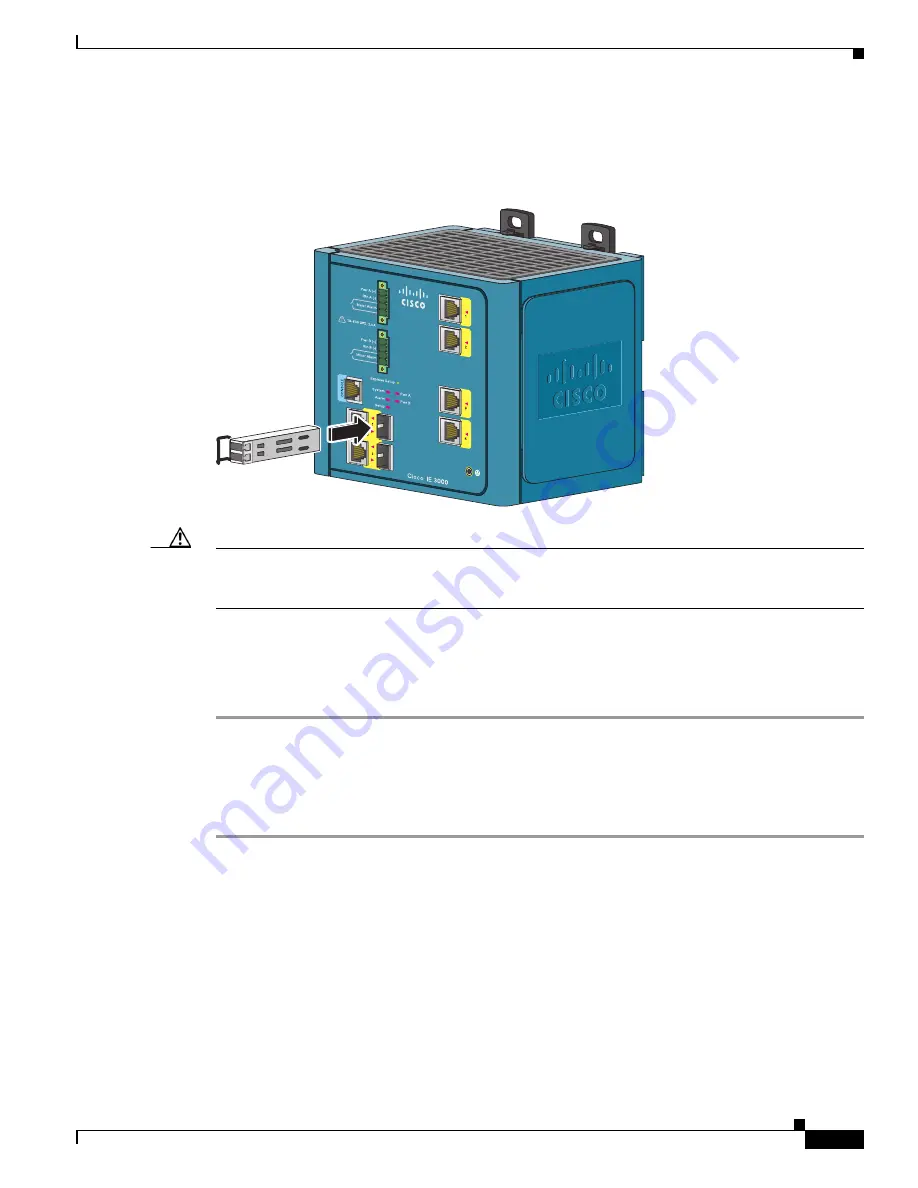
B-47
Cisco IE 3000 Switch Hardware Installation Guide
Appendix B Installation In a Hazardous Environment
Connecting Destination Ports
Step 4
Slide the SFP transceiver into the socket until you feel the transceiver connector latch into place. See
.
Figure B-33
Installing an SFP Transceiver into an SFP Module Socket
Caution
Do not remove the dust plugs from the SFP module port or the rubber caps from the fiber-optic cable
until you are ready to connect the cable. The plugs and caps protect the SFP module ports and cables
from contamination and ambient light.
Step 5
Using your thumb, press firmly on the SFP transceiver to ensure that the SFP is properly latched in the
port.
Step 6
When you are ready to install the network cable, remove the dust plugs from both the cable and the SFP
transceiver and store them away for future use. Insert the LC cable connector into the SFP transceiver.
Removing SFP Transceivers from Module Ports
To remove an SFP transceiver from a module port, follow these steps:
Step 1
Attach an ESD-preventive wrist strap to your wrist and to a grounded bare metal surface.
Step 2
Disconnect the LC from the SFP module.
Step 3
Insert a dust plug into the optical ports of the SFP module to keep the optical interfaces clean.
Step 4
Unlock and remove the SFP module. See
If the SFP transceiver has a bale-clasp latch, pull the bale out and down to eject the transceiver. If the
bale-clasp latch is obstructed and you cannot use your index finger to open it, use a small, flat-blade
screwdriver or other long, narrow instrument to open the bale-clasp latch.
201866
















































